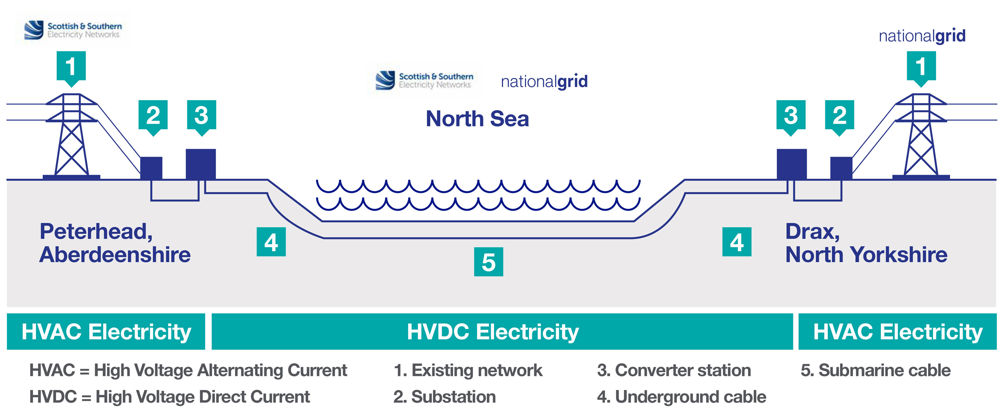Eastern Green Link 2 (EGL2) will run from Peterhead in Scotland to Drax on the east coast of England, running under the sea for most of its 500km+ length. Designed to connect the abundant wind resources of Scotland to the bulk of the UK’s population further south, the 2GW, 525kV cable will be help deliver power up to two million homes.
Related content
The project will be delivered as a joint venture by National Grid and SSEN Transmission, forming a key pillar of the Great Grid Upgrade to prepare the electricity network for net zero. EGL2 is the UK’s single largest electricity transmission project ever and will feature the longest HVDC subsea cable in the country. Construction is set to get under way by the end of this year, with EGL2 operational by 2029.

“Ofgem’s decision to issue its final project assessment decision is a major milestone, and testament to the hard work of our project teams within SSEN Transmission and NGET in getting us to the stage where construction can begin later this year,” EGL2 project director Ricky Saez said in a statement.
“Not only will EGL2 will play a major role in bolstering energy security and contributing to net zero targets, it will also provide a lasting legacy in local communities where our teams are already supporting local environmental initiatives that enhance community wellbeing.”
Contracts have now been awarded to deliver the £4.3bn project. Prysmian Group has been selected to supply around 1,000km of cable, with Hitachi Energy and BAM chosen for the supply of converter stations at either end of the subsea cable.
Responding to the EGL2’s approval, Lawrence Slade, chief executive of Energy Networks Association (ENA) said: "This is really welcome news from Ofgem. To move us forward towards clean power will require the biggest upgrade to the grid in decades. In turn these projects will unlock jobs, secure work for contractors and suppliers, and ultimately mean more secure energy supplies in the future. This is a crucial part of that jigsaw."
EGL2 is part of SSEN Transmission’s Pathway to 2030 programme, a £20bn investment to upgrade the electricity network in the north of Scotland to unlock the country’s renewable energy resources.
The project is set to be followed by EGL3 and EGL4, separate HVDC cables that National Grid is developing in parallel due to their proposed shared connection point in England.
An early consultation on the onshore elements on EGL3 and EGL4 in England closed in July 2024, with National Grid expecting to submit its application for development consent to the Planning Inspectorate in 2026.











Deep Heat: The new technologies taking geothermal energy to the next level
No. Not in the UK. The one location in the UK, with the prospect of delivering heat at around 150°C and a thermal-to-electrical efficiency of 10-12%,...